This post may contain affiliate links. Please see our disclosure policy.
Finnish fermented lemonade (or Sima) is a traditional carbonated beverage made for Vappu celebrations on the first of May. It’s a delicious lemon-y soda that’s been made for generations, and it’s easy to make at home with just a few simple ingredients.
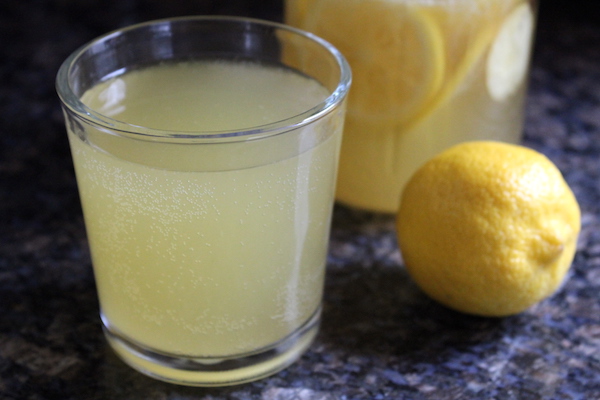
The tradition of mead or honey wine goes back millennia in Nordic countries, and it’s no surprise that countless variations have developed over the years. Sima is a quick fermented lemon soda, that’s technically a mead at heart. It’s only fermented ever so slightly, just enough to make it a bubbly effervescent lemonade suitable for heavy drinking on a hot spring day, or sharing with young ones.
Sima is a traditional drink for Vappu, or Finnish May Day. It’s passed around in huge festivals as everyone emerges from their winter hibernation to enjoy spring in the north country. Up here in Vermont, real spring starts about the same time as Finland, in early May. This year, we’re celebrating with cold glasses of Sima.
This winter I’ve been reconnecting with my Nordic heritage by reading through The Nordic Cookbook. My grandmother and her clan of fiery red-headed Norwegians left behind most of their food traditions and assimilated quickly to this country long before I was born. As a child, I remember that my grandmother’s holiday baking was always extravagant, and only now I’m learning that it was part of the Nordic tradition, and creating a large supply of Nordic Christmas Cookies for the table helped represent abundance.
Beyond the Christmas cookies, there wasn’t much nordic living in my upbringing, and I feel like I have a lot of catching up to do. I found some really exotic wild foraged Nordic recipes, like this one for traditional pine bark bread, which has kept things interesting in my kitchen of late.
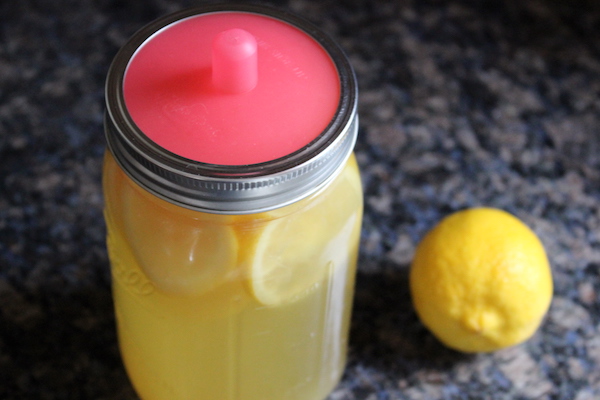
I love how The Nordic Cookbook puts everything in context and describes the traditions surrounding each recipe. Here’s what it has to say about Sima:
“This beverage, which has its origin somewhere in the mead family of drinks and which was, in the past, made from honey, is today most often made from white and/or brown sugar and water. Sima is flavored with lemon and is drunk before all the sugar has been consumed by the yeast cells and turned into alcohol. It should be fresh and fruity tasting, with a light sparkle. It is predominantly drunk on Vappu, the Finnish May Day, and is often served alongside traditional Finnish May Day funnel cakes…”
The recipe listed is conveniently designed for a one-quart batch, which is perfect for making in a quart mason jar with a silicone water lock.
While the original recipe listed called for just the juice and zest of one lemon, I sliced the lemon thin and put the whole thing into the fermenter. I also chose to use all honey, going back to the drink’s old-school roots in mead. I added the lemon and honey to a quart mason jar, and then poured boiling water over everything to dissolve the honey and help extract the flavor from the lemons.
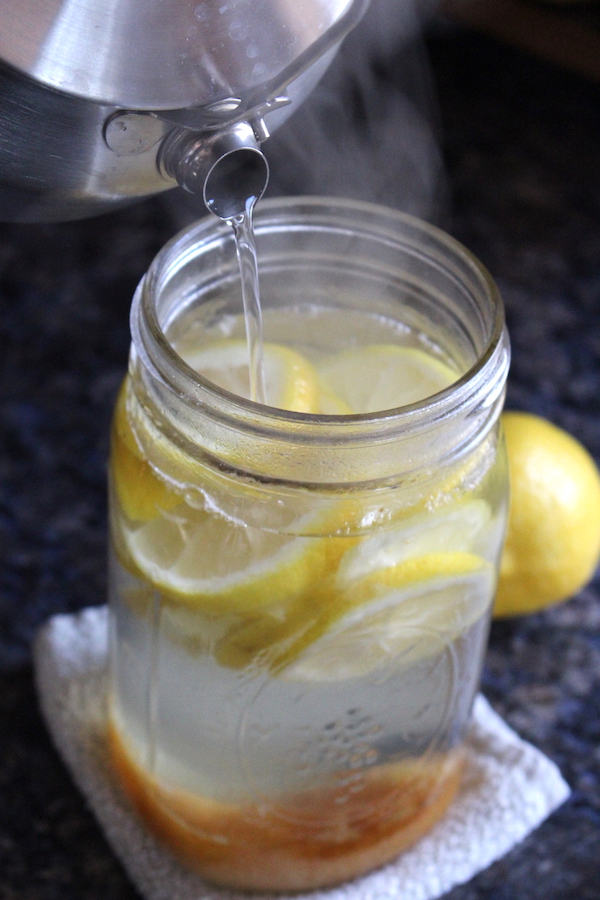
The other interesting inclusion in the traditional recipe is five raisins. Modern mead recipes often include a few raisins to help provide nutrients for the yeast. These raisins definitely do that, but they also have another purpose.
According to The Nordic Cookbook, “The slightly odd-looking addition of 5 raisins is actually very clever. They will ferment alongside the brew itself and puff up like little balloons with CO2. When they float up to the surface, the sima is ready to drink.”
The raisins actually act like a little biological turkey timer, popping up when sufficient CO2 is present in the fermented lemonade to create a pleasant level of fizz (but not too much alcohol). Most meads are fermented for several months at least, if not longer, but this quick ferment lasts only a week.
The goal is carbonation, not alcohol, and the resulting fizzy lemon drink was consumed by everyone, including young children.
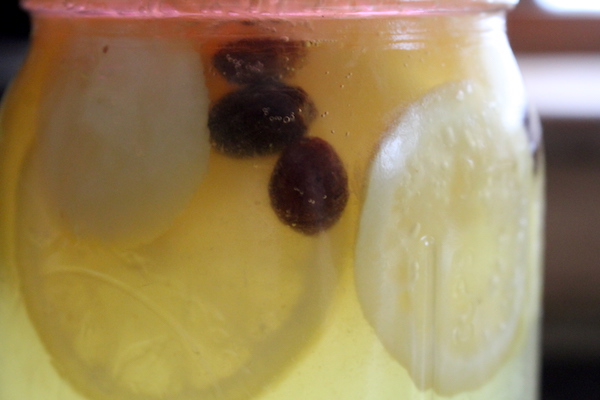
I read one estimate that the finished beverage has around 0.05 to 0.15% alcohol or similar levels to Kombucha. How true that is, I couldn’t say, but you definitely don’t taste the tiny bit of alcohol in sima. It’s quite sweet, with a bit of fizziness that’s really pleasant.
The flavor is a bit different than a standard lemonade, but I think that’s because of the addition of lemon zest or peel into the batch.
It tastes much more lemon-y than any lemonade I’ve ever tasted, and you can smell it well before you taste it. It’s the lemon oil from the peel, and it has an intense lemon scent that comes through as a flavor too.
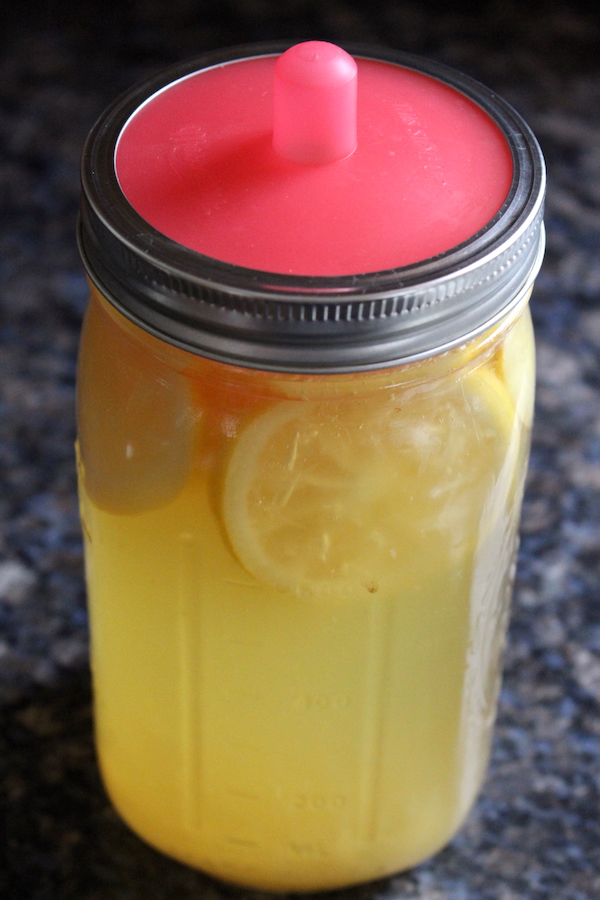
Generally, I stress the importance of using brewing yeast for any type of ferment, as opposed to standard bread-baking yeast. In a long ferment, the yeast actually contributes quite a bit of flavor to the final brew. Cider yeast strains will bring out the best in apples, and there are specific yeast strains for just about every type of beer.
This drink is fermenting for such a short time that it really doesn’t matter. Use a pinch of wine yeast if you have it, but otherwise, just any dried yeast will do.
I happened to be right in the middle of brewing several batches of wine, and I already had pitched the yeast into parsnip wine and lemon wine. I saved a small amount of my go-to wine yeast (premier blanc) for this ferment.
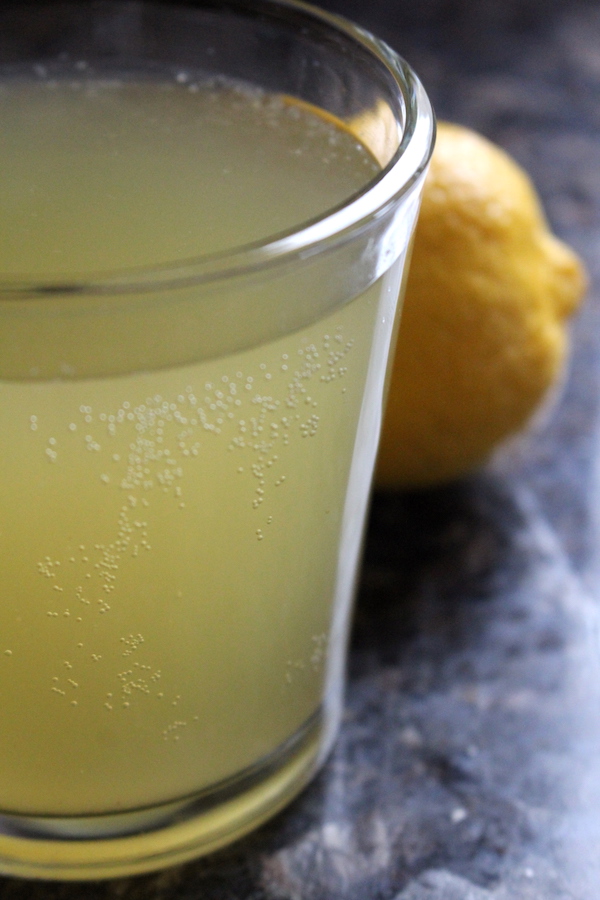
Allow the mixture to ferment at room temperature for about 24 hours until the raisins puff up and begin to float.
Mine only took about 18 hours to float to the top, but I pitched it pretty aggressively with wine yeast since I had plenty left over. Either way, once the rains float, filter out the lemons and raisins and bottle the drink in either flip-top Grolsch bottles or another mason jar.
Seal up the lid tightly and store it in the fridge for another 2-4 days until it’s fully carbonated. The tight lid will trap the bubbles and allow for a carbonated lemonade, but you can’t leave it too long.
Be sure to drink it within seven days for the best results.
Finnish Recipes
Want to stick with Finnish Recipes? Read on…
- Finnish Oven Pancake (Ålandspannkaka)
- Finnish Teaspoon Cookies (Lusikkaleivät)
- Finnish Salmon Soup (Lohikeitto)
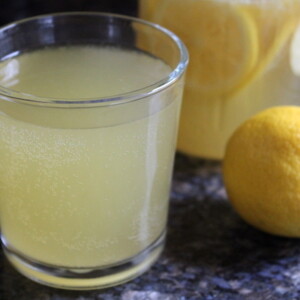
Sima ~ Finnish Fermented Lemonade
Ingredients
- 1/2 cup honey, or brown sugar
- 1 Lemon, juice and grated zest, or a thinly sliced whole lemon
- 5 raisins
- 1 pinch Yeast, ideally wine yeast, but bread yeast will do
- water to fill
Instructions
- Place the sugar, raisins and lemon slices (or juice and zest) in a quart mason jar. Pour near boiling water over the top to fill the jar to within 1 inch of the top. Stir to dissolve the sugar or honey.
- Allow the mixture to cool to room temperature, and then add a pinch of yeast. Stir to incorporate.
- Seal the jar with a mason jar airlock (or cover loosely with a cloth if you don't have an air lock). Allow the mixture to ferment at room temperature for 24 to 48 hours, until the raisins float to the top.
- Once the raisins float, pour the sima through a fine mesh strainer and bottle in flip-top Grolsch bottles or another mason jar. Seal the lids tightly and store in the refrigerator.
- Allow the drink to age in the refrigerator sealed for 2-4 days to accumulate carbonation. The tight seal is what allows the drink to carbonate. If you find it's not carbonating in the refrigerator, leave it out on the counter for a few hours to carbonate (but watch the time there, leaving it out too long will cause too much pressure to build up, and it may break the container).
- Keep the drink stored in the refrigerator to slow fermentation until you're ready to drink. Open it when you're ready to consume, but be sure to drink within seven days for best results.
Nutrition
Nutrition information is automatically calculated, so should only be used as an approximation.
Fermented Drinks
Looking for other tasty, naturally fermented drinks?
Scandinavian Recipes
I have plenty of recipes to keep your scandi kitchen cooking!
- Swedish Cinnamon Cookies (Kanelkakor)
- Drømmer Cookies (Norwegian Browned Butter Cookies)
- Swedish Banana Bread (Banankaka)
- Danish Raspberry Bars (Hindbærsnitter)
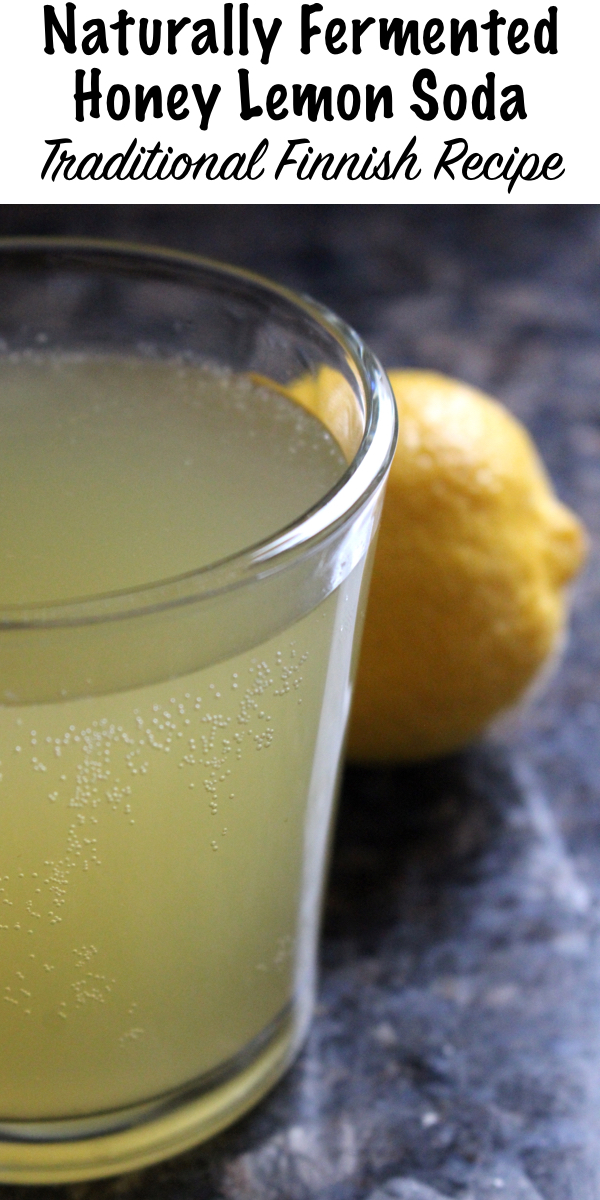
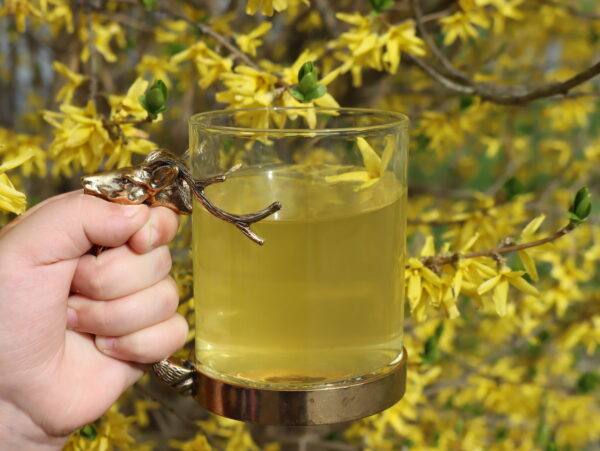
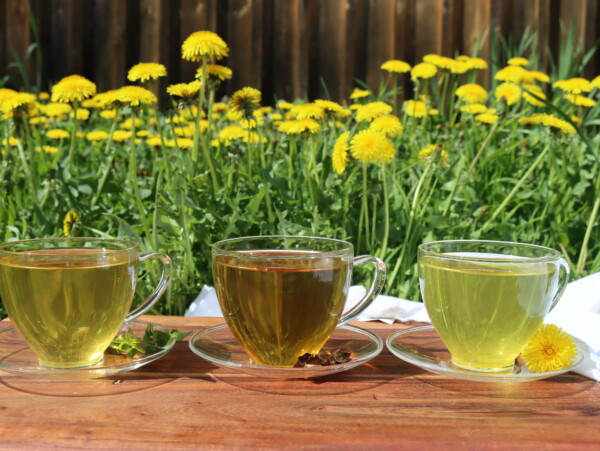
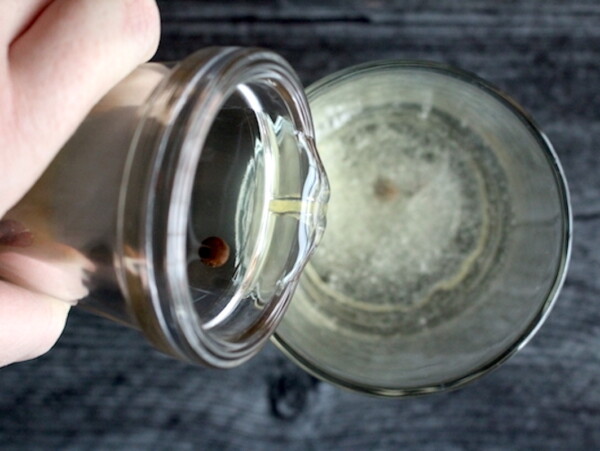
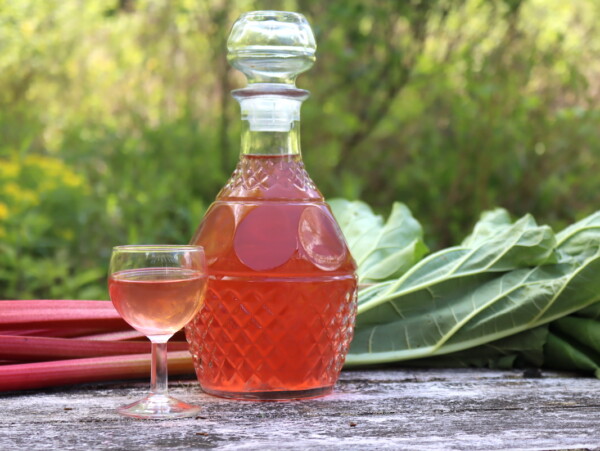
I really wish these recipe pages would include a ‘jump to the recipe’ link. Instead of having to scroll all the way down and try to find what the actual recipe is.
Sorry, I don’t have a plugin to do that at the moment!
Can you let it fermented a little longer in room temperature before putting it in the fridge? What would happen if so?
Yes, you can let it go a bit longer. It’ll be less sweet, and more alcoholic, so it’s up to your personal taste.
Here’s a question, how would you modify this recipe to make it have 3-5% ABV? If it’s possible. Thanks 🙏
RSW
You can choose to let it ferment longer, letting the yeast convert more sugar into alcohol. You’d need a hydrometer to do the alcohol measurement, but they’re around $10, or maybe less.
Well, it has almost been 48 hours, and only one raisin is barely floating while the others are still at the bottom. I used wine yeast but not much, wishing I used more now. And I used half honey and half brown sugar. Next try will just be all white sugar. Losing 1/4 cup of honey makes me sad. Maybe I should have waited longer before putting the yeast in. It was warm, not hot, but not room temp either. I used my new water lock.
Hmm… It sounds like you did everything right, so I’m not sure what, if anything, went wrong. Do you have an update on how it turned out of if it started fermentation?
it’s worth investing in a food thermometer and using that, coupled with the temperature range listed on your yeast packet. the yeast i use, for example, recommends 90-100F for the water temperature, which it takes a lot longer to cool to than you would expect, and the water feels “warm, not hot” at higher temps than 100, when it actually is still too hot for the yeast.
what do you think about the use of beeswax-lined cloth for the fermenting process? it breathes so do you think it would it also have to be burped ? I’d love to try this recipe as I’ve tried others of yours, the latest being your bread machine cinnamon raison bread, and liked them. thanks.
Beeswax cloth sounds like it might work out well for this if it breathes a bit. (If not, I’m sure the carbonation would just pop it off so it’d self burp)
Hello from Finland! I just started following you – you Have a lots of interesting things here. This year i did my sima from sourdough starter and it was even better than the original in my opinion. We makeismainoksena from all kind of things for example rhubarb, fireweed( the color from the 2 precious ones is a besutiful pink) and also fromblackcurrant leaves. Have a nice summer!
Thank you! Your sima sounds wonderful!
Have you ever used anything other than raisins? Like dried currants? Cranberries?
Only asking as I have everything on hand except for the raisins. I understand they have high content of natural surface yeast or ‘bloom ‘ on them.
Also, when i have spent lemons on hand I toss in a jar and cover with white vinegar. I use for cleaning once it’s infused enough. I also add to water for a lemon rinse for skin and hair. I
Thank you for sharing your recipe from your roots!
You’re welcome! I haven’t tried using any dried fruit besides raisins, but dried currants or cranberries would probably work the same.
I personally use craisins in ALL my fruit brews, and they work great. It’s just a little extra food for the yeast, nothing more
Thanks for sharing!
Love this recipe! I prefer “hard limeade”. I have made bread with wild yeast for years and I use white raisins to encourage any liquid fermentation. The breed captures I use potatoes and corn meal. Love your recipes keep them coming! Thanks, Kristin.
How much water do I put in and what a a quarts mason jug? Thanks
A quart size mason jar is 32 oz., so in the recipe, you’d use almost 32 oz. boiling water.
I don’t have any raisins, but do have dried cranberries. Would this work? Also, could initial ferment take less than 24 hours if ambient temp is warm? Thx!
Dried cranberries should work the same way and you could see fermentation bubbles begin in as little as 12 hours.
Just what I was looking for! Thanks so much for this post!
You’re welcome! I’m glad you liked it!